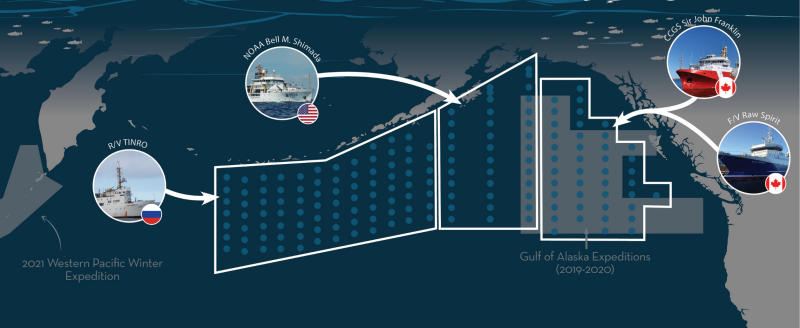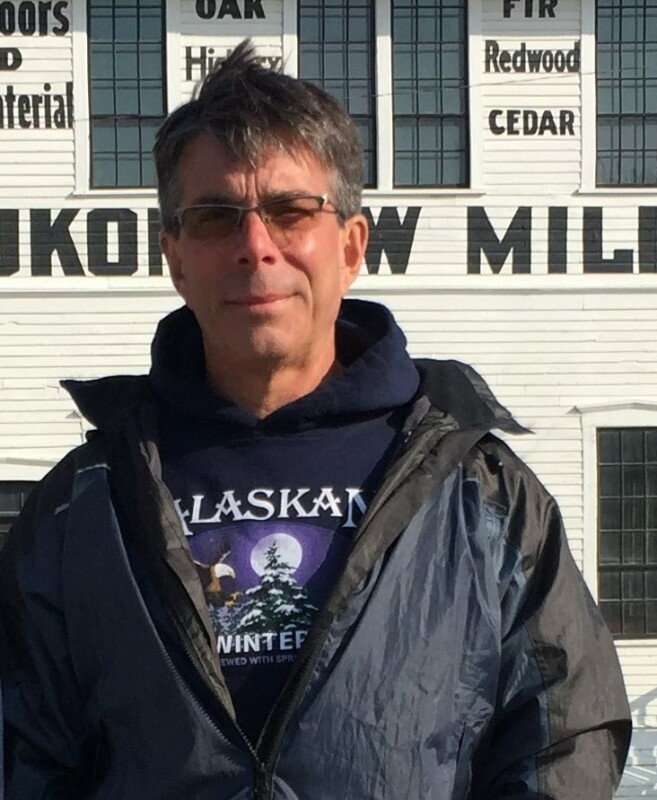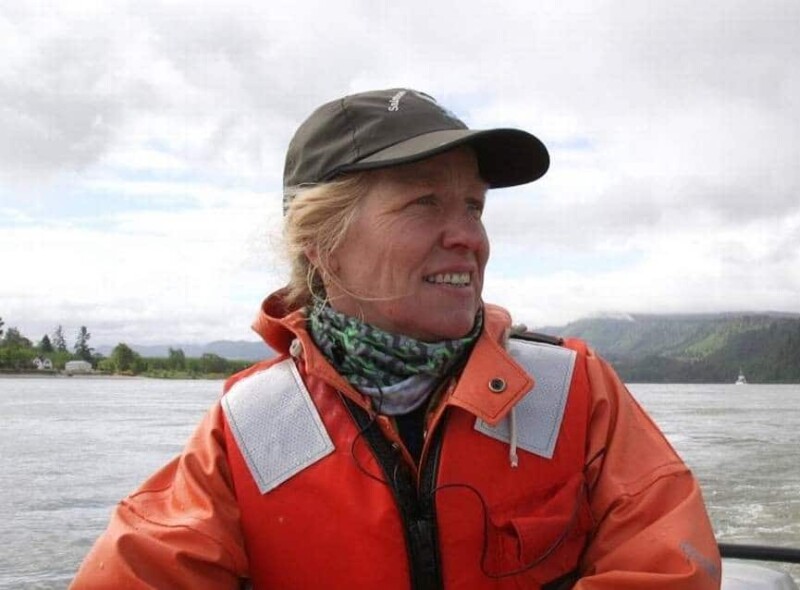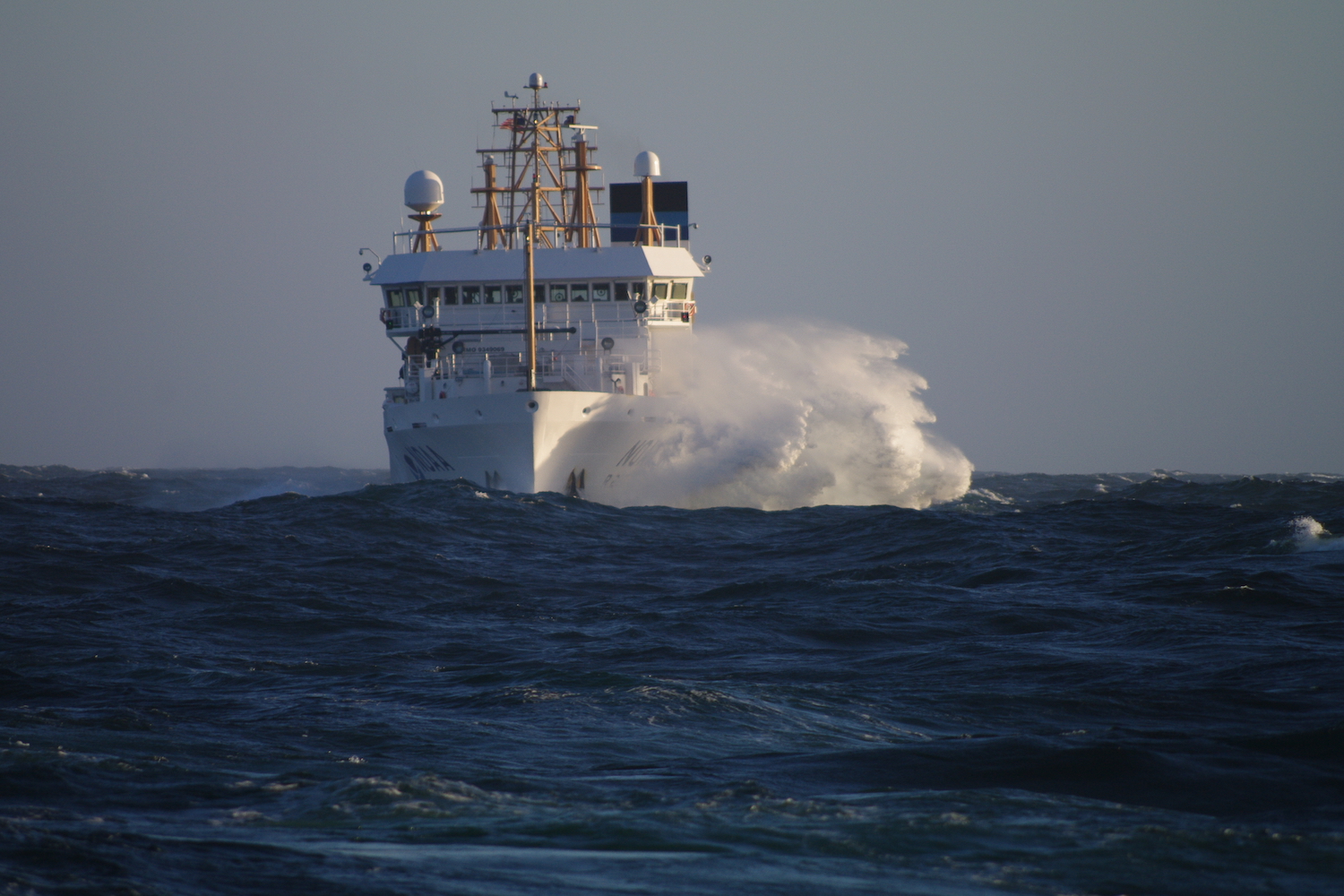The largest ever ecosystem survey of salmon across the North Pacific is bringing together 60 scientists from five nations and a flotilla of four research vessels to learn more about “increasingly extreme climate variability” and its effects on salmon survival, scientists say.
Researchers hope the sea sweep can offer some meaning to fluctuations in salmon populations in reaction to big swings in ocean temperatures – and the future of key salmon spawning populations with climate change.
A NOAA research vessel, the 208-foot Bell M. Shimada, will take the lead departing from Port Angeles, Wash., Tuesday to start its survey track between the 47th parallel south of Seattle north to Kodiak Island, followed by Canadian and Russian vessels setting out to cover other salmon survey areas – as far as 800 miles offshore.
“Most of their life is spent in the ocean” for five to six years before salmon swim to freshwater rivers for spawning, said Laurie Weitkamp, a research fisheries biologist at the NMFS Northwest Fisheries Science Center who is leading the first leg of the Shimada’s research cruise.
“It’s also the one (life phase) we know the least about,” said Weitkamp. “When they go out in the ocean, they enter a kind of black box.”

After young salmon make their way to the ocean at summer’s end, winter is their second critical period, beset by predators and striving for food. On a 2019 survey “we saw a lot of really, really skinny chum salmon. It looked like they were starving to death,” said Weitkamp.
After years of ocean temperature fluctuations, the effects on salmon stocks have been very uneven, said Ed Farley, a biologist with the NMFS Alaska Fisheries Science Center in Juneau.
In the 2021 season “there was a collapse of chum salmon (returns) to the Yukon River, however Bristol Bay sockeye returns are at record highs,” said Farley.
Those fish spend their sea years in different regions: Yukon River chum are found in the Gulf of Alaska, while Bristol Bay sockeye are found south of the Aleutians and farther west, said Farley.
“That’s why these surveys in the winter are so important,” he said.

The $10 million research effort was organized through the International Year of the Salmon, a project support by the North Pacific Anadromous Fish Commission, a treaty organization including the U.S., Canada, Russia, Japan and South Korea that was originally created to control high seas driftnetting for salmon.
Now the threat is climate change, biologists say.
The 2015 warm-water “blob” and ocean heat waves that disrupted the North Pacific fisheries are suspected to be the triggers for fluctuations in salmon spawning returns. The Shimada and other vessels will be out in North Pacific weather conditions, gathering data about ocean conditions, the food web, and making 1-hour sampling trawl tows at 155 stations about 60 nautical miles apart from the U.S. Northwest out to the end of the Aleutian Islands chain.
Scientists on board will gather genetic samples from captured fish, hoping to link those found at sea to fish that swim in the spawning rivers. An autonomous undersea glider vehicle, controlled from the University of Alaska at Fairbanks, will shadow the Shimada’s route, diving down past 600 feet to record and transmit back oceanographic data.
“This is probably the boldest, most far-reaching survey of the open ocean in the North Pacific ocean that’s ever taken place,” said Mark Saunders, an expedition organizer with the International Year of the Salmon, during a Jan. 28 conference call with news reporters.
“The climate change we’re seeing now, the impacts are severe,” said Saunders. “’The timing is really now to begin to understand this.”
The research vessels will pull samples to measure environment and ecosystem influences, ranging from plankton to large predators like salmon sharks, while with catching salmon, steelhead and associated species. A Canadian commercial vessel will use gillnets to assess how effective the bigger trawl nets are in sampling the fishes and composition of salmon plus steelhead in surface waters.
Genetic sampling will be a new key, enabling researchers to link fish found at sea to spawning populations in rivers around the North Pacific rim. It’s a completely different game from decades ago when researchers tried to make best guesses from tagged-and-released salmon, said Weitkamp.
A big payoff will come from the analysis on genetic samples that scientists collect at sea. Those will link the ocean wanderers to their spawning home grounds.
“We can take a little fin clip, and know exactly where it came from,” said Weitkamp.

“If we can understand where these fish are in the open ocean, we can begin to link it to understanding management systems and actions in freshwater that will need to know what the potential fate for these animals is under a changing climate system,” said Saunders.
In all the effort involves 10 government agencies and the British Columbia Salmon Restoration and Innovation Fund.
The research vessels’ tracks and reports can be viewed online with photos, videos and latest postings from reasearchers on the IYS website. The last cruises will return to port in April, and reports will be posted in May, with preliminary findings planned for a symposium in Vancouver in early October, said Saunders.







